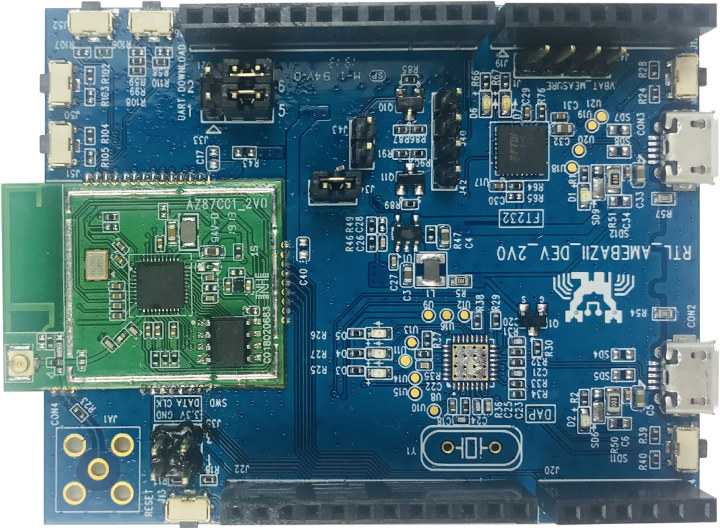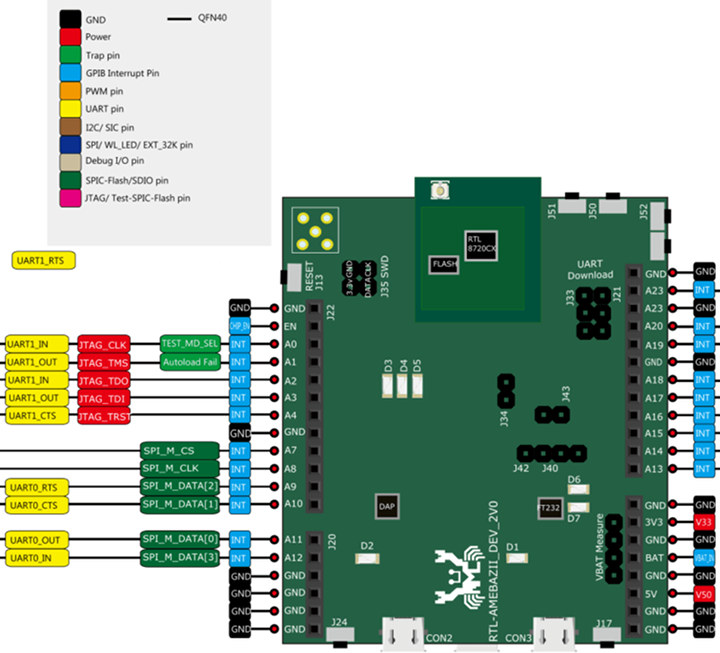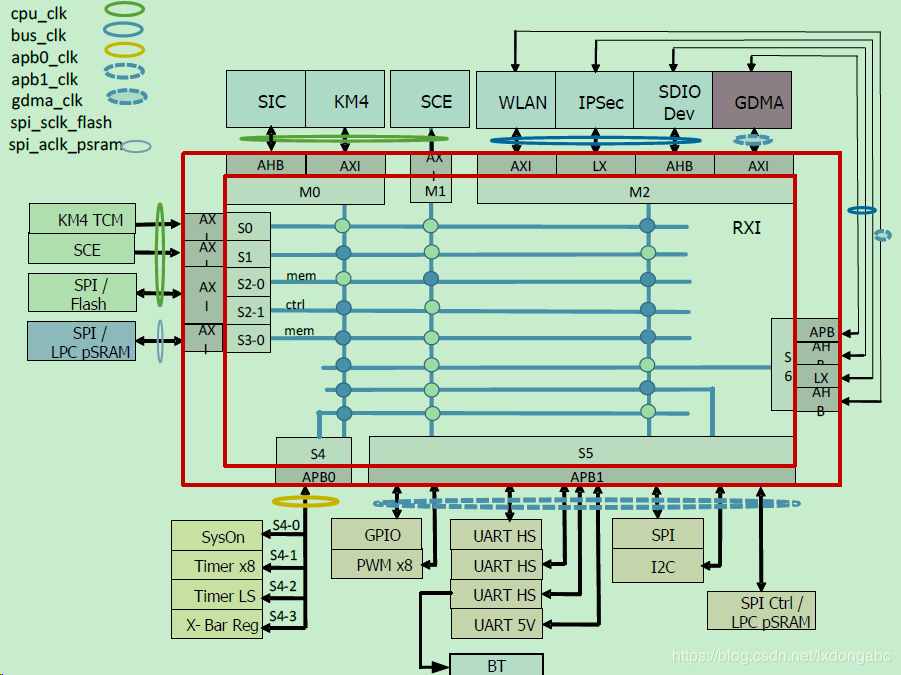In 2016 we discovered Realtek Ameba wireless microcontrollers combining an Arm Cortex-M3 core with WiFi connectivity, and that could potentially become an ESP8266 competitor with modules selling for as low as $2. But the solution never really took off, because it was about the same price as ESP8266, and the latter already had a solid software ecosystem and community.
But RealTek has now introduced a new Ameba Z2 IoT development board powered by RTL8720CM microcontroller featuring an Armv8-M KM4 core clocked at 100 MHz. What’s an Arm KM4 core you may ask? Seeed Studio informed me Arm and RealTek worked together on the KM4 core, so it looks like a custom Armv8-M microcontroller.
Ameba Z2 IoT Development Board

Ameba Z2 (ZII) specifications:
- Wireless MCU – Realtek RTL8720CM single core Armv8-M KM4 core @ 100MHz with 4.2MB internal RAM, WiFi and Bluetooth radios
- Storage – 2MB external flash on module
- Connectivity
- Wi-Fi – 802.11 b/g/n 1×1 Wi-Fi 4 (20/40MHz) with PCB antenna, and u.FL antenna connector
- Bluetooth – BLE 4.2 with optional SIG Mesh
- USB – 2x micro USB ports
- Expansion – Arduino UNO headers with 3x UART including 2 HS-UART and 1 log UART, 1x SPI (Master/Slave), 1x I2C (Master/Slave), 1x SDIO 2.0, 8x PWM, and up to 16x GPIOs
- Misc – 7x buttons, UART download header, 4-pin SWD header, VBat measurement header
- Security – Cryptographic operation, optional TrustZone and secure boot, WiFi WEP, WPA, WPA2 and WPS
Note there aren’t any analog ports, so this won’t be compatible with all Arduino shields.

The RTL8720CM based Ameba Z2 IoT development board is said to run Amazon FreeRTOS. AFAICS, there isn’t any specific documentation for the board yet, and Seeed Studio points to Ameba IoT official website for now, but again no info there.
In case you feel adventurous, you could purchase the board for $23.99 with the full knowledge documentation and software are currently completely missing.
A few more details about RealTek RTL8720CM MCU
A post on CSDN (Chinese language) does provide some more details about the new microcontroller.

The block diagram does provide some insights on how everything is connected internally, and the features list confirm the KM4 core:
- CPU – KM4 core at up to 100 MHz
- Memory/Storage – 384KB internal ROM, 256KB internal SRAM, 4MB pSRAM
- Connectivity – 802.11 b/g/n WiFi 4, Bluetooth Config, Bluetooth Mesh
- Peripherals
- 3x UART
- 1x SPI master up to 20 Mps, 1x SPI slave up to 4 Mbps
- 1x I2C up to 400 Kbps
- 2-channel GDMA (General-purpose DMA controller)
- 16x GPIO
- 8x PWM outputs
- 1x SDIO 2.0 interface
- 1x Watchdog
- Timers – 1x basic timer (32K), 8x advanced timers (40M)
- Debugging – SWD/JTAG
- Security – Secure boot, TrustZone-M (fixed size: 32KB)
- Misc – BOR (Brown-Out Reset) detection; deep sleep wake-pin: 16
- Package – QFN40 (5×5 mm2)
But sadly, we don’t have any information about that KM4 core, so we don’t know what the difference against other Armv8-M microcontrollers such as Arm Cortex-M23 or Cortex-M33. The clear advantage over RealTek Cortex-M3 solutions are the secure bits with support for TrustZone and secure boot.

Jean-Luc started CNX Software in 2010 as a part-time endeavor, before quitting his job as a software engineering manager, and starting to write daily news, and reviews full time later in 2011.
Support CNX Software! Donate via cryptocurrencies, become a Patron on Patreon, or purchase goods on Amazon or Aliexpress




